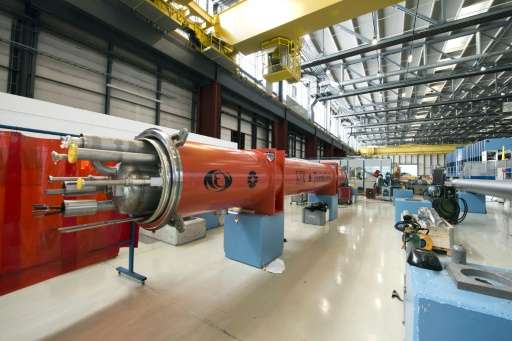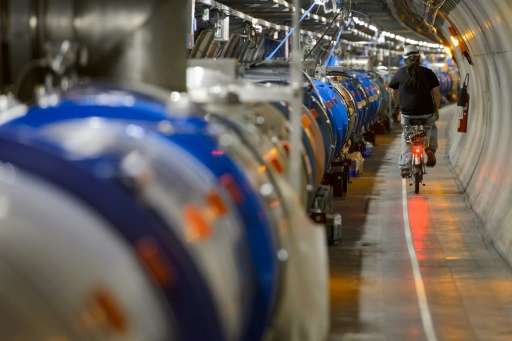China’s state-run media has reported the country will begin work on the world’s largest super collider in 2020.
The goal of the program will be to gain a more thorough understanding of the Higgs boson, also known as the ‘god particle”.

Per the report, the facility will be at least twice the size of the Swiss-based CERN, where the Higgs boson was first discovered. Scientists believe the particle is one of the building blocks of the universe.
By the end of next year, the final concept design for the project is expected to be complete, said Wang Yifang, director of the Institute of High Energy Physics at the China Academy of Sciences.
While the CERN facility is 27km-long, the proposed China collider is expected to have a circumference of 50 to 100km. The state media also reports the Chinese project will generate seven times the energy of the LHC, colliding electrons and protons at higher speeds to generate the particle on an unprecedented level.
Specifically, it is being reported the Chinese facility will generate millions of Higgs bosons, significantly more than the capacity of Europe’s system, which generates just a few hundred. The country believes this larger quantity of available particles will help scientists better answer some of the more fundamental questions about how the universe works.

“The technical route we chose is different from LHC. While LHC smashes together protons, it generates Higgs particles together with many other particles,” Wang said. “The proposed CEPC, however, collides electrons and positrons to create an extremely clean environment that only produces Higgs particles,” he said.
“LHC is hitting its limits of energy level,” he adds. “It seems not possible to escalate the energy dramatically at the existing facility.”
The timing of the announcement is a bit peculiar, as it comes when many developed countries around the world are implementing austerity measures that reduce research funding for projects without clear applications. China, on the other hand, is investing enormous sums of money into what can only be described as theoretical and practical sciences.
Worth noting: per a handful of presentation slides put together by Wang in Geneva that appeared on his institute’s website, planning for the collider project began in 2013, just a few months after the discovery of the Higgs boson. He has suggested Qinhuangdao, a northern port city that is the starting point of the Great Wall, as being a perfect location for the underground facility; specifically, he noted ideal geological conditions as well as local vineyards as important selling points.
“This is a machine for the world and by the world: not a Chinese one,” he added, saying that physicists from around the globe had travelled to China to help with the project.
“China brings to this entire discussion a certain level of newness. They are going to need help, but they have financial muscle and they have ambition,” said Nima Arkani Hamed from the Institute for Advanced Study in the United States, who joined the force to promote CEPC in the world.
David J. Gross, a US particle physicist and 2004 Nobel Prize winner, added in a commentary co-signed by US theoretical physicist Edward Witten that while the cost of the project would be significant, the benefits would also be great.
“China would leap to a leadership position in an important frontier area of basic science,” he wrote.
If everything moves forward as proposed, construction of the first phase project CEPC will start in 2020, followed by the second phase in 2040.
Via Phys.org; China Daily
Advertisement
Learn more about Electronic Products Magazine





